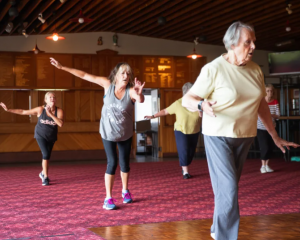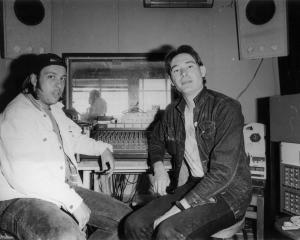

"I really like doing fun things outside and I really like to combine the two — a photographic and video practice — so, if I can, take cameras or a camera-like object into the hills and use that to make some work."
The Wellington artist, who makes work around Maori narratives pertaining to the landscape, hopes to continue that during her Frances Hodgkins Fellowship with plans to head into the bush in the Takitimu Range in Southland, an area which has links to her whakapapa, Ngati Ranginui and Ngai Te Rangi in Tauranga Moana.
"I have visited them before. I know our narratives in Tauranga and we say these ranges are the upturned waka of Takitimu. I’m interested in learning about more localised narratives from around here and spend time in them, learn about them.
"I had planned to do a bit of camping and hiking through there."
The Covid-19 lockdown has put paid to that for now — instead she is staying in her Dunedin flat and continuing her research and reading, including searching topographical maps.
"I’m looking forward to doing it at some stage. I’ll be really prepared when I get to go."
Her love of the great outdoors began after high school, when she took a couple years off to travel around New Zealand, spending time apple picking and learning to snowboard in Wanaka.
"I learnt there are so many amazing places and locations in Aotearoa you can easily access if you have enough knowledge, physical fitness and mental ability."
Spending time in those environments felt "really norma"’ for her.


Reweti is not completely new to Dunedin, having done a residency with the Caselberg Trust last year. Her Creative Connections Residency project in Dunedin, titled "A conversation between two harbours", focused on exploring the possibilities to develop a conversation between two harbours — Otago and her home, Tauranga Moana.
"It was such a nice cottage I spent most of my time there, so did not spend much time in Dunedin, but I’ve heard lots of good things about it and I’m looking forward to spending more time in the city. I was excited to come down here and live here."
Like other recipients, she is very aware of those artists who have gone before her.
She is also amazed at the foresight of those who established the fellowship, which supports artists for a year.
Her work was usually project-oriented and conducted over about six months, but this depended on work she had been commissioned to do.
"There is this ebb and flow. I’m quite a project-based person, which is a response to trying to maintain an art practice while having to pay your rent.
"Each project also helps get funding and support from Creative New Zealand, as well.
"That’s why the fellowship is so nice. It allows me to develop a studio-based practice more long term. I can develop ideas rather than quick-fire projects started and completed in six months."
That approach had taught her a lot about thinking on her feet and responding to opportunities.
"It’s so nice to be able to just breathe."
She has also done a variety of residencies, including at Singapore’s NTU Centre for Contemporary Art, the Banff Centre in Canada and at The Physics Room in Christchurch.
Last year was a busy one for Reweti, who has a master’s degree in Maori visual arts from Toioho ki Apiti at Massey University.
"It’s kind of different as it is an art school within a Maori studies department. It was really formative for me and my practice."
She is part of the Mata Aho Collective, four Maori women who work collaboratively to create large-scale objects under a single authorship. The collective was among the first New Zealand artists to be invited to exhibit in "documenta" in 2017 alongside Nathan Pohio and the late Ralph Hotere.

Last Thursday, it was announced the Canadian rope project had been nominated as one of four works shortlisted for the Walters Prize, New Zealand’s most significant contemporary art award.
The collective recently returned from the Dhaka Art Summit in Bangladesh.
"We travel quite a lot."
Reweti’s lens-based practice focuses on Maori histories of place and has its origins in her photography endeavours at high school, but it was not until she saw Rachael Rakena’s moving-image works at the Christchurch Art Gallery that a career as an artist seemed like a possibility.
"They had this amazing Ngai Tahu exhibition. It was the first time I’d seen Maori content that was video work within a very big and new gallery. It was intimidating. It definitely sparked my interest."
Since then she has developed her photography and moving-image practice.
"Photography and moving image are a practice I can rely on. I know it well enough to be playful with it, stretch it out a bit. It’s been a slow development of having a practice and practising."
She has never been attracted to other mediums of art. "I can’t really draw."
"I like how a camera uses light to create an image. I’ve always been really fascinated with that. Especially those early cameras, like a camera obscura or pinhole camera. The simplicity of having a dark space with a small hole of light is magical and very simple as well."
Reweti has also been curating shows and would like to contribute to the ecology of arts, especially Maori arts in New Zealand. She co-curated the 2018 show "Maori Moving Image: An Open Archive", which exhibited the works of more than 20 Maori artists at both the Dowse Art Museum and Christchurch Art Gallery.
Being in lockdown has not fazed her too much.
"I’m quite introverted anyway. I’ve got a vegetable garden and two flatmates, so we can adapt to whatever happens."












